The origin of the exotic cat breed, care and breeding
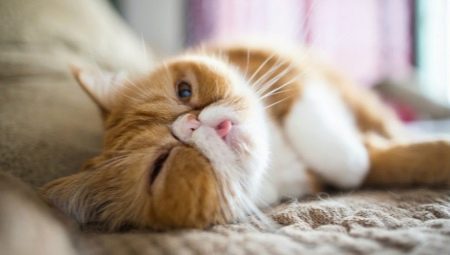
Today, one of the most popular cat breeds is the exotic cat. This breed has won the hearts of pet lovers thanks to its friendliness and affectionate appearance - huge eyes, cute face and beautiful color. It is worth noting that caring for a cat of this breed is not so simple, and here it is worth considering some features.
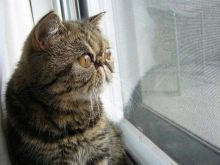

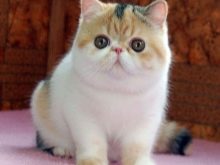
Origin story
The exotic cat breed was bred in the United States of America in the early 60s of the last century. Exotic cats appeared as a result of crossing of two breeds - Persian and American shorthair cats. That is, this breed was bred artificially.
The aim of the experiment of American breeders was to improve the color of the standard shorthair cat. To put it mildly, the result of the crossing experiment turned out to be extremely unexpected and unforeseen. The kittens bred as a result of crossing turned out to be very cute and charming - with plush hair, wide eyes and large body volumes.
The experiments continued, and as a result, the resulting hybrid species of cats was decided to be isolated in a separate breed, and not attributed to shorthair cats, as was originally planned.
The official date of birth of the exotic breed is 1966. Although initially scientists gave the name "sterling", which later did not take root, the breed began to be called exotic. Indeed, for the Americans, this breed was something extremely exotic and new.
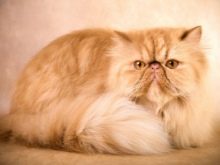
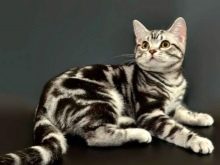
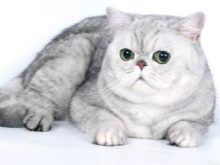
Then another event took place, bringing the breed closer to the kind that we are used to seeing today.And this interesting event happened in 1973, when, as a result of a series of regular experiments, a characteristic feature of exotics appeared, which conquered many - a snub-nosed muzzle. This funny trait made the breed even more adorable. At this, attempts at crossing did not stop, and only by the 90s were the standards for the requirements for the breed of exotic cats defined. After that, this type of cat was forbidden to cross with other breeds.
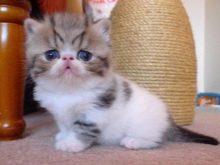
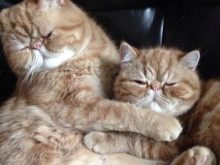
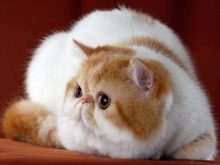
Description
Even in the official standards for the requirements for the breed of exotic cats, they all practically coincide with the requirements for the Persian breed. However, the main difference is the wool. Exots are distinguished by their "plushness", because their wool can reach up to two centimeters in length, and there is also a rather thick undercoat. These lovely cats have full cheeks, a short and strong neck and that very unusual nose. This type of nose, like that of exotics, is called a "nose with a foot". Most lovers of home furry pets exotics were able to conquer it with their expressive big eyes.
This breed of cats is distinguished by short, but very developed and strong paws. In general, the body of exotic animals is quite strong and stocky, despite the cute plushness.
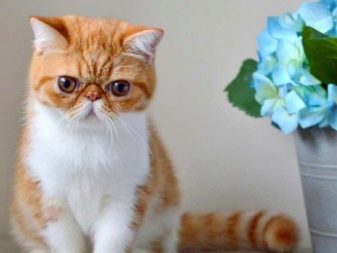
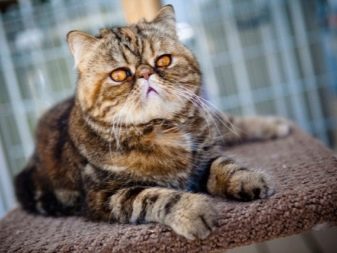
According to the accepted standards established when breeding these cats, there are some basic rules regarding their appearance.
For example, the head of an exotic cat should have a rounded shape with prominent cheeks. A required parameter is a snub nose. Eye color can be very different. It usually depends on the color of the cat's coat. It is worth noting that sometimes there are exotic with eyes of different colors... It happens that one eye can be yellow and the other blue.
This phenomenon is called heterochromia, and in no case should it be considered a disease, much less a serious one.
This is only a small anomaly arising from the abundance of a certain coloring segment of the eye. This phenomenon does not affect the cat's eyesight.... But the appearance of an already cute exotic cat becomes even more attractive.
Recently, photos and videos of cats with heterochromia have gained particular popularity on the Internet, despite the fact that ordinary cats have been the leaders of the Internet for a long time. Therefore, do not worry if the kitten has different eye colors. It is not necessary to urgently take him to the veterinarian, and even more so to try to carry out an independent "treatment". There is nothing to treat in this case.
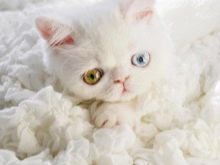

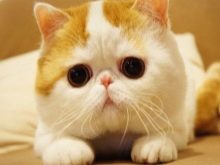
Wool and color... Fur was mentioned above. Beautiful, plush wool is one of the main differences between exotic animals. Usually it does not reach such a length that it lies on the body, although the wool of exotics is longer than that of ordinary cats. The color of the coat can be completely different. There are both very dark exotics and light ones. Many people combine several colors on their coat at once, which are distributed in spots of different sizes.
It is also worth distinguishing between short-haired and long-haired exotics. The coat of the short-haired representatives, as the name suggests, is rather short, but very thick. And long-haired exotic cats have long hair, and with it a negative aspect that many owners do not like so much - the hair of cats remains everywhere.
The size of the body of exotic animals can reach up to 30 cm at the withers. The standard indicator is 25-27 cm.
And also exotic animals are distinguished from other breeds by their tail. It is short, usually shorter in relation to the body of the cat, but rather fluffy and rounded at the end.
The weight of males of this breed can reach up to 7 kg, and females - up to 4.5.
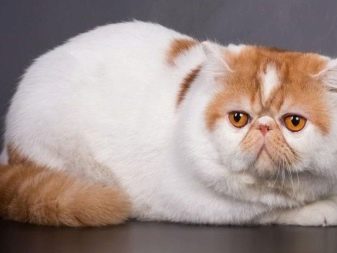
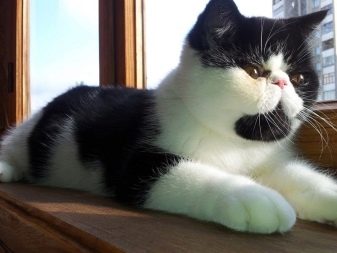
Character
From the Persian cat, exotics were able to inherit one of their main traits, in addition to appearance - habits.
Exots are extremely gentle and affectionate. It is unlikely that among such independent animals as cats, you can find someone more obedient and affectionate than an exotic cat.
Representatives of this breed are extremely quiet animals.They give their voice on very rare occasions, and even then very quietly. Therefore, the future owner of such a cat should not worry that at night they will be woken up by a loud meow in their ear.
Many exotic owners note that this breed is extremely friendly towards small children. A big plus if the family has a child. Exots will never scratch or bite him, they will play and explore the world together.
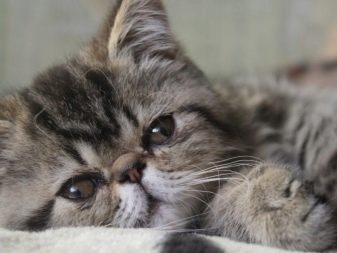

Exotic cats are absolutely unobtrusive, but extremely loyal. A cat can patiently wait for its owner while he is busy with business, sit quietly, not demand affection or treats, that is, not attract attention. But as soon as the owner calls his pet, he will instantly come running and jump onto his lap, rejoicing that the owner was finally able to give him time. In this regard, exotics are extremely understanding animals.
It should be noted that these cats are not hunters at all, and they almost never have a fighting mood.
Rarely does an exotic get into a fight with another cat or other animal. They have practically no desire to hunt mice or birds. We can say that this is a 100% domesticated cat.
Cats of this breed endure separation from the owner extremely acutely. They really feel bored, their appetite disappears and motor activity decreases. In principle, they are able to endure travel quite staunchly, so you can take exotic animals with you if you need to leave for a long time.
Exots are really socially active cats. They just need to be with the person at all times. They are very fond of games, but even just sitting next to a person is very pleasant for them.
It should be noted that this breed lends itself quite well to training and training.
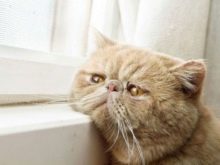
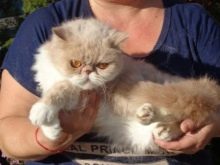
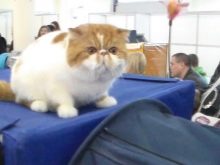
Life span
Of course, the main factor that affects the life expectancy of any pet is the living conditions. The cat must be brought to the veterinarian from time to time, to monitor how he eats, pay attention to his behavior, and periodically walk with him. Under normal conditions, exotic animals live on average 15-16 years. Some individuals can live up to 20 years.


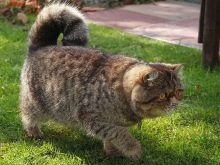
Views
Speaking of exotic cats, it would be wrong to say that these cats are all alike. They have their own varieties. That is, cats of the same breed may differ, but nevertheless they will have similar external signs. So, for a start it is worth highlighting the long-haired and short-haired exotic cat. They have already been mentioned above. The main difference lies in the length of their coat. Long-haired representatives are more fluffy, have a long coat of more than 2 cm. A short-haired cat has a high density of coat, but the length of its coat does not exceed two centimeters.
Otherwise, cats of this breed differ in color. It is worth noting the most common shades.
- Blue. Very beautiful color of the coat, giving off gray-blue shades. In Russia, there is even a similar breed with the same shade - the Russian blue.

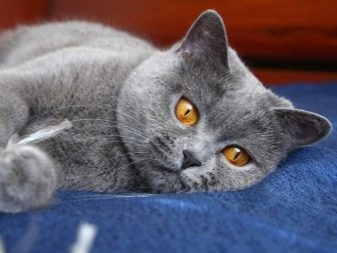
- Black. In this case, the cat's coat is bright black, with practically no other shades. Less common is the transition from black to dark gray.


- Tortoiseshell... Many are wondering exactly how the tortoiseshell color looks. Actually, it has no specific shade. A tortoiseshell is a coat color that combines several colors at once. For example, white, gray and red. Together they will be called "tortoiseshell".
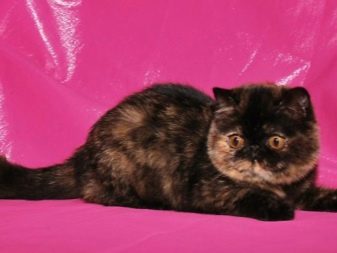
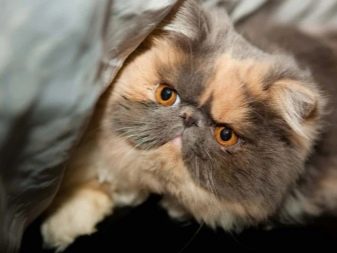
- White. This shade of coat is extremely beautiful. Pure white wool rarely has any other shades. White is a very relaxing color, so a pet with this coat will have an even more relaxing effect.
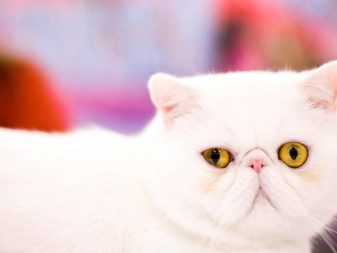
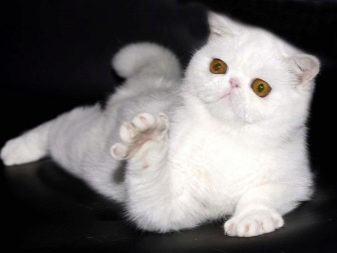
- Marble... This coat color usually combines two shades. Most often it is black and gray.
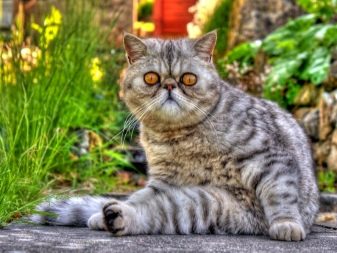
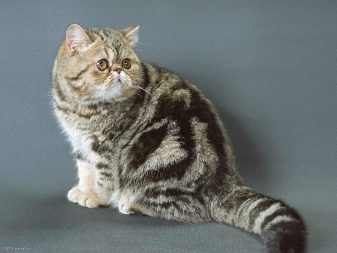
- Red tabby. Sometimes it is mistakenly called simply "ginger".But their difference is that this color is the brightest on the back, and on the stomach and limbs it becomes very faded. But exotic cats of a red color usually have a delicate creamy shade. That is, such a red color, not very pronounced.

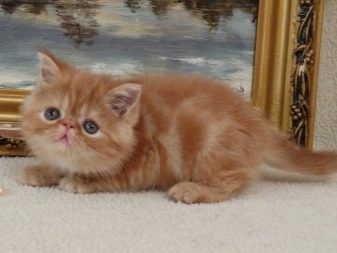
Care features
The appearance of any domestic cat must be closely monitored. Caring for exotic cats has its own characteristics.
If we talk about bathing a cat, then it is advisable to wash exotic plants once every 3-4 months. Of course, this depends on how dirty the coat is, so bathing can be done more often if necessary. This is usually recommended when it starts to shed. The loose wool must be washed off, otherwise the old wool will remain on the cat. This is fraught with both the ugly appearance of the animal and the fact that the wool will remain on furniture, floors and other places.
It is better to redeem the exotic once again than to solve problems with its wool and constantly clean the house. Do not forget that most cats have an extremely negative perception of water and, moreover, water procedures. For a cat afraid of water, bathing can be a real challenge and stress.

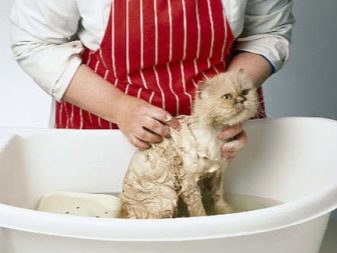
The very procedure for bathing exotics should take place in a certain way.
Do not forget that the wool of the exotic is extremely dense, and sometimes the shampoo used is simply not able to penetrate deeply, washing only the upper part of the wool. Many people recommend that you lather your cat a little with a degreasing dishwashing liquid just before the bathing procedure. This will not do any harm to six cats, but it will degrease the surface of the coat, so that the shampoo can penetrate deep into the coat. After applying the degreasing agent, rinse it off thoroughly and then proceed to the main bathing procedure.
For exotics, shampoos containing any medicinal herbs or seaweed extract are recommended. This has an extremely positive effect on the condition of the coat and undercoat - it strengthens their structure and gives a healthy appearance.
It is especially worth washing those places that are most often prone to dirt - legs, tail and chin. After rinsing off the shampoo, you can also use a conditioner rinse. Additionally, you can use special remedies for skin pests and parasites. In dense coat, there is a possibility of their appearance. Not to say that exotics are often susceptible to such a problem, but it is advisable to use such funds for prevention.
When the bathing procedure itself is over, and the owner and the cat exhaled with relief, it is necessary to start drying the wool. This moment also has its own characteristics. Attempts to dry the cat's fur with a regular towel is a lengthy procedure, and not very effective. The density and density of wool plays a role here. Therefore, you can use a regular hair dryer. With such a device, the process will noticeably accelerate and be more efficient.

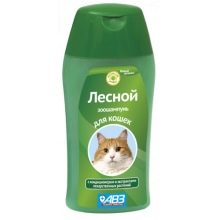

Experienced owners of exotic plants sometimes use grooming powder after drying. Consider what it is and why you need it.
Grooming powder is a special cleaning agent that can remove dirt without the use of water... This is a very convenient way when it is necessary to remove any contamination in a specific area of the fur, because for the sake of one speck it is not very advisable to wash the cat completely. Nevertheless, grooming powder can be used as an additional remedy after bathing. It completely removes residual moisture, and the coat becomes silky and bright from it.
You need to apply this product against the fur of the animal. Worth watching so that the product does not get into the ears, eyes and mouth of the cat. Actually, when bathing with shampoo, this should also be avoided. Exotic eyes are large, so the likelihood of getting detergents is high. Today in pet stores there are shampoos and products that do not irritate the eyes.
After applying the powder, it is necessary to carefully comb out the coat according to its growth. And just combing the wool is the next step in grooming, which will be discussed here.
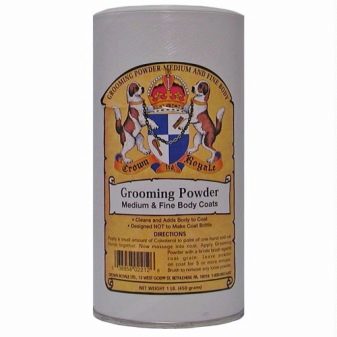
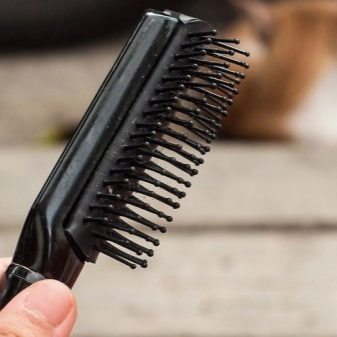
As for combing exotics, here it is worth noting one fun fact - seals of this breed are jokingly called "Persian for the lazy"... And all because, although he looks like a Persian cat in many ways, he did not take over from him the problems with the coat, which requires careful care. Short-haired exotic animals leave their hair only if they begin to shed, and even then there is not so much of it. Nonetheless, brushing the coat is an important aspect of grooming a cat.
The sides of the exotic and its belly must be combed according to the growth of the coat, on the rest of the body it is recommended to comb against the fur.
Short-haired exotic can be brushed 1-2 times a week with a regular comb. A little more often you can use a massage brush. With a long-haired breed, the brushing procedure should be done more often. Actually, there is nothing complicated and unusual in combing exotic wool. Standard care kit - comb, massage brush. You can also use a slicker, but it is better to use it only when the cat is molting. This tool does a good job of removing loose hair.
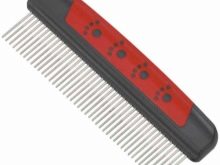
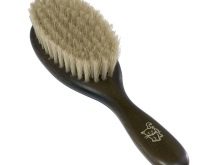
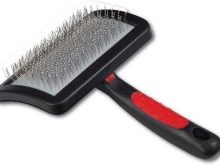
Exotic big eyes also require attention from the pet owner. It is necessary to periodically carry out preventive procedures, maintaining the hygiene of not only the exotic eyes, but also the oral cavity, ears, as well as carry out cosmetic procedures to trim nails and remove coarse hair.
Exotic eyes are not only their most beautiful feature, but also the most vulnerable organ prone to infections, fungi and bacteria. Specialists and veterinarians recommend performing preventive procedures a couple of times a month. This also applies to the prevention of auricles. For many owners, the problem of prevention is to "fix" the animal. No animal will like it when its eyes or ears are rubbed for some unknown reason, and even sometimes all kinds of "filth" drip there. But the procedure is necessary for his own good. Therefore, it is worth fixing the position of the cat under the arm, but carefully, trying not to press hard.
Eyes can be blotted with a napkin soaked in ordinary boiled water. In more serious cases, various ointments, drops, sometimes containing antibiotics, are used. An important note about antibiotics is that they should never be used if the cat is healthy.
The bacteria quickly develop addiction to antibiotics, so in a more serious situation, such remedies will simply be useless.
Another important aspect in the care of exotic eyes is that they do not need to be rubbed. It only irritates the eyes of the animal. They need to be blotted - carefully and without sudden movements. For eye prevention, it is recommended to additionally wipe the exotic nose. Harmful substances often accumulate on the mucous membranes, which can develop into more serious diseases.
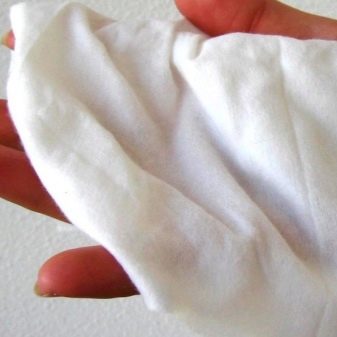
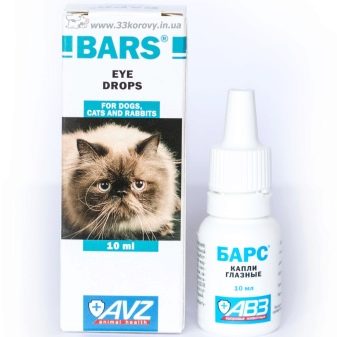
Regarding the care of the auricles, it is worth noting that this is also a common problem with exotics. If you do not remove natural ear secretions for a long time, then dust accumulates on them, which is also fraught with the appearance of various parasites, fungi and even ear mites. Ear care can be done with a regular cotton swab, removing discharge. This must be done carefully so as not to damage the hearing organs.
Additionally, you can use acaricidal ear drops, which just prevent the appearance of ear mites.
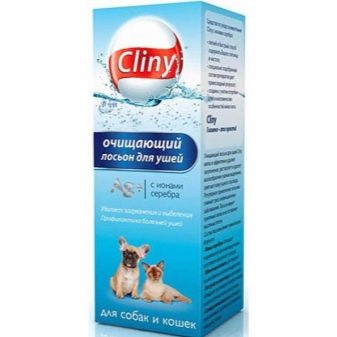
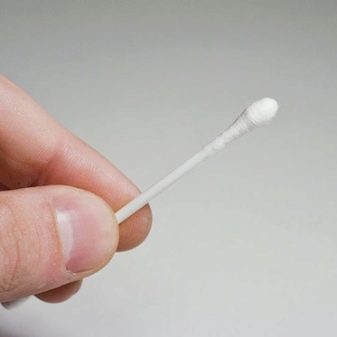
In addition to previous treatments for the prevention of feline disease, another extremely important part of grooming is clipping the claws. The procedure is not as simple as it might seem at first glance. For the cat itself, claw trimming is rather unpleasant, but it is worth taming it with a kitten. Pet shops or veterinary pharmacies sell special nail clippers.It is highly discouraged to trim claws with ordinary scissors. In the claws of cats there are bloody veins, along which cutting is strictly prohibited:
- the animal is just wildly hurt, since they have great sensitivity in this place;
- by cutting the claws in this way, there is a risk of infections, improper growth of the claw, and so on.
Therefore, you need to use strictly nail clippers. They resemble tweezers, with which only the very tip of the claw needs to be cut. By the way, it is worth noting that exotics are especially unusual for the release of claws and the desire to scratch a person. They are so friendly that they are practically incapable of showing aggression. Nevertheless, the cat needs to carry out a "manicure", especially if the pet gets into the habit of tearing wallpaper or pieces of furniture. In this case, you cannot do without buying a scratching post, but it is also necessary to trim the claws.
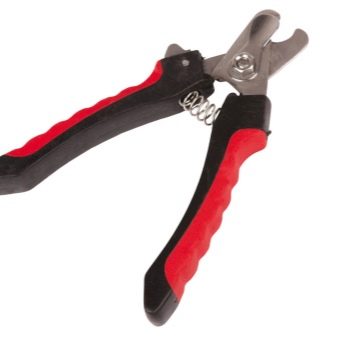
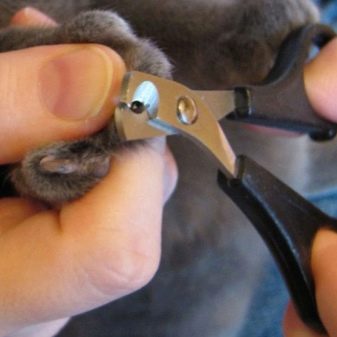
Few people pay attention to another aspect inherent in some exotics - hard guard hair. Some cats sometimes show long, coarse hair from their beautiful, plush coats. This occurs periodically in animals obtained by crossing. Such hairs are clearly visible. They are usually longer than the rest of the coat and differ in color. You can remove such hairs by ordinary plucking with tweezers. After removing such hairs, the cat's coat will be beautiful and clean.
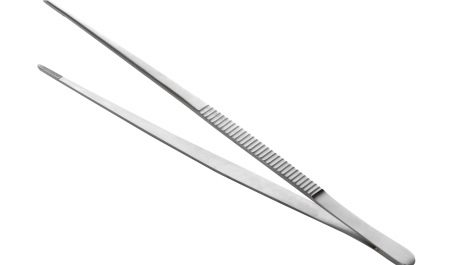
Taking care of the oral cavity of a furry pet is also a must. To completely eliminate problems with teeth in a cat, it is recommended to carry out prophylaxis 1-2 times every two weeks. Many will be skeptical or ironic about this point. However, cats also get their teeth cleaned. In our country, it is somehow not customary to pay attention to the oral hygiene of animals, but nevertheless, they can also have toothache. Only they cannot tell us about it and they simply have to endure the pain.
In the same veterinary pharmacies and pet stores there are special brushes for cleaning teeth and tooth powders. At first, you can brush your pet's teeth simply with a brush dipped in warm water. For stronger teeth, you can use tooth powders. Of course, this procedure for a pet is extremely extreme, so it is likely to twist and scratch. The cat must be fixed, and the day before, the claws must be cut.
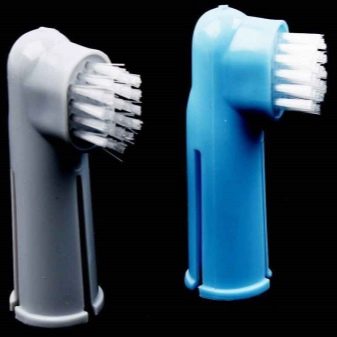

To arrange the life of a pet and to care for it, you need to purchase several things. Let's start with what absolutely any pet needs in the first place - a toilet. The litter tray is the first thing that should already be in the house when a new furry resident appears. For exotic plants, experts recommend using a wood filler made from pressed sawdust. Exotics do not like clumping fillers.
Scratching posts for exotics are also necessary, otherwise furniture and walls in the house may be damaged.
Scratching posts can be quite simple - flat, which is a board with a soft cord stretched over it. And you can buy voluminous scratching posts, which come in different shapes.
If the space of the living space allows, then you can find large structures that are a whole attraction for cats. They have several tiers, toys on ropes, and they themselves are upholstered with cords, on which the pet can sharpen its claws.
And also for more fun leisure time you can buy your pet a variety of toys, the choice of which in pet stores today is very wide. Laser pointers are popular - exotics love to run after a bright light. The main thing is not to point the pointer at your pet's large, sensitive eyes or at curtains, glassware, or other valuable items.
These were the main points to consider when caring for a cat. This does not mean that this is all there is to know. It is recommended to pay attention to both the nutrition of the cat and its medical examinations by a specialist.
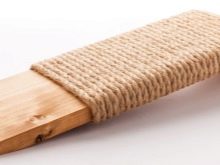


Nutrition
Oddly enough, but what exotic and unpretentious is in food. Of course, you should not give anything, as well as feed exclusively dry food to the cat. You can give exotics dietary meat, for example, beef. Such meat contains taurine, which will have an extremely positive effect on the pet's cardiovascular system. Gained great popularity when feeding exotics offal, which are poured with boiling water.
Exots, like all other cats, are very fond of fish. It is advisable not to give the cat river fish, as it often contains parasites. And it is also advisable to first remove the scales and bones from the future treats so that the exotic does not damage its mouth or stomach.
In principle, meat products can be mixed with various cereals (buckwheat, rice) and cereals, which will be extremely nutritious and healthy.
The main thing is that the diet is not meager. You can additionally give the cat low-fat sour cream or other dairy products once a week. This will replenish the supply of exotic proteins. It is not recommended to feed your pet with the same one day after day. This affects both the saturation of the body with the necessary substances and vitamins, and the digestive system of the pet. As already mentioned, exotics are picky about food.
Many experienced pet owners say that you need to feed your cat what you eat yourself. In principle, the statement is more correct.



Breeding
A very important issue that should be given a lot of attention is the breeding of cats. It's one thing to care for one pet. Another is to deal with the sale of kittens and their breeding. This is a very tricky business, as it might seem to those hoping to start breeding cats for easy money.
This is a very responsible occupation, because the physical and psychological state of the kittens, their habits, character and appearance will depend on the actions of the owner.
For irresponsible people, this lesson is not suitable. You need to do this business with full dedication, love your pets and devote a lot of time to them. Let's first list the main points necessary for the correct breeding of exotic cats:
- choosing a cat and a partner for her;
- waiting for the mating season;
- knitting;
- caring for a pregnant cat;
- childbirth of a cat;
- caring for a cat and newborn kittens;
- correct upbringing of kittens for further sale.
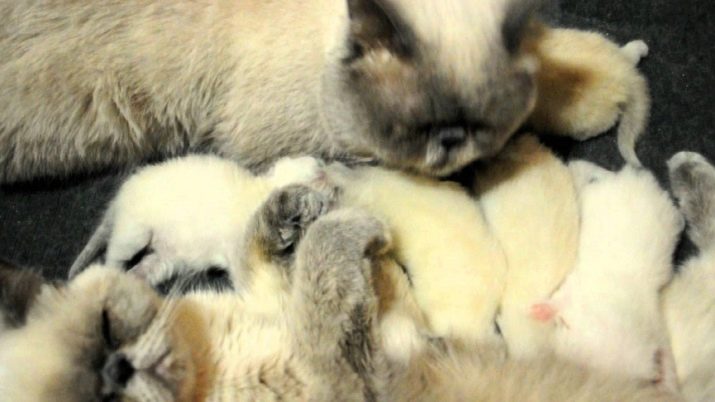
Now let's analyze these points in more detail.
Partner selection
A cat for further breeding of kittens must be purebred, have a beautiful color and good health. When choosing a partner, it is necessary to take into account what color and what physical parameters the kittens obtained from him had.
Both the cat and the male must strictly have all the vaccinations and vaccinations that must be carried out annually. The complete absence of health problems, a beautiful coat and a benevolent character will be the key to good offspring in the future.
If there are any suspicions related to the health of both individuals, then mating should be postponed.
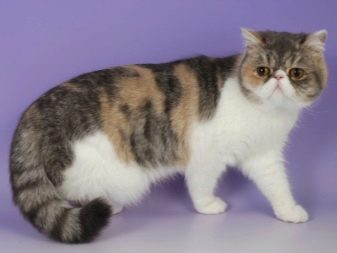

Mating season
Many people think that it is not difficult: brought a cat, a male, waited for mating and are waiting for kittens. But this is not the case. The cat must be between 16-17 months old to start admitting it to a partner. It is believed that it is at this age that the feline body is ready to bear and reproduce offspring. The mating season is a responsible process that lasts several days. Usually up to a week, or even more.
A cat itself in heat lasts about 7-8 days. It is during this period that the female will be ready for mating. Everything here is like people have - acquaintance, courtship. Often, exot females can be aggressive during the mating season, especially if they are not used to a partner. Therefore, both sides must first be brought together, to observe their reaction. Usually the cat is brought to the territory of the male. Do not expect them to immediately rush to each other.
Initially, a lot of tension will reign between them. The cat will need to explore new territory, get acquainted with new smells, and only then proceed to meet the male. Sometimes there have even been cases when cats stop in heat in a new territory, and they are no longer ready for mating. This is due to stress and new experiences.
It is recommended that the owner is always close by. And you can also expect an aggressive reaction from both sides. Therefore, it takes time for the animals to get used to each other.

Knitting
Although the exotic male is ready to mate most of the time, this does not mean that he will immediately rush to the female to fertilize her. The male approaches this process with great caution, despite the raging hormones. Usually the exotic walks around the cat for a long time, sniffs. Sometimes he may never decide to mate for only one reason known to him. The cat, when ready for the process, begins to give meowing sounds and falls on its front paws.
Even if mating happened, this does not mean that once is enough. He may be completely unsuccessful. Therefore, it is necessary to give the female and male a couple of days for further mating.
But also the cat can be very aggressive at this moment, trying to pounce on the male. An open fight should be avoided, and a couple should be constantly supervised.
At the end of mating, it is necessary to carefully examine both animals. When mating, males have a habit of biting a cat's neck and can sometimes damage it without calculating the strength. If there are injuries, they should be carefully handled. With more serious consequences, you cannot do without the help of a veterinarian.
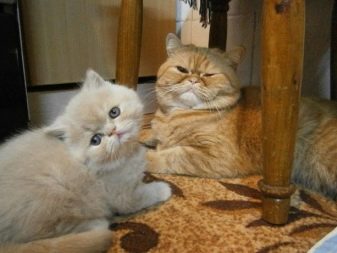

Pregnancy
If all the previous points are successfully completed, and the new couple is ripe for creating a cat family, then the cat's pregnancy begins. The process is slow, requiring patience and special care not only for the female, but also for her future offspring. The gestation period of exotics is up to 65 days, plus or minus 1-2 days. It is noted that kittens born between 50 and 58 days old usually die immediately.
Therefore, it is extremely important to create all the conditions necessary for the full and comfortable bearing of all kittens for the cat. How to determine the onset of pregnancy in a cat? Usually, an exotic female has extremely low activity within 10 days after mating. There may even be nausea. In the future, the cat may begin to behave differently than before.
Pregnancy also affects character. The female exotic can begin to show more affection, and can become aggressive. How exactly she will behave is impossible to predict.
The main thing is to periodically show the animal to the veterinarian, especially in the last couple of weeks of pregnancy.... And also it is worth worrying about a place for future childbirth in advance. You can use a large cardboard box for this, lining the bottom with newspapers and pieces of cloth.
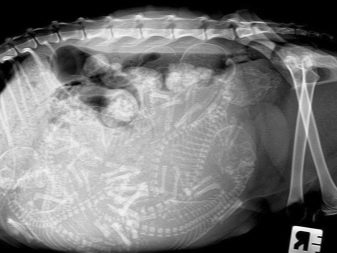

Childbirth
The duration of the process itself can be from 2 to 6 hours. Kittens can appear at different intervals. A person should not interfere in this process. If childbirth proceeds normally, then the cat is able to cope on its own. It is important to ensure that the cat does not accidentally step on the newborn kittens, as well as to stimulate their breathing. Cats do this simply by licking - they lick the kittens' nose and mouth to clear it of mucus, and the kitten does not interfere with breathing.

Caring for kittens and cats
The first time after giving birth, the cat has discharge, which must always be cleaned up on time, maintaining cleanliness in the place where she is used to lying. The main thing is nutrition. It is necessary to feed a cat after giving birth several times more, because her body is extremely depleted. It is also important to give her plenty of fluids.
Newborn kittens are blind and will sleep most of the time, so don't worry if they are not very active.The cat will feed the kittens herself, the main thing is not to forget to feed her abundantly.
Kittens will open their eyes about 9-10 days after giving birth. It is useless to try to determine their future appearance right away. Almost all kittens have bluish eyes, and pigmentation begins from the third week of life. The kittens will soon learn to walk, but will feed on the female's milk for about three weeks. After this period, you can teach kittens to eat from a bowl. The diet should be changed gradually, it is difficult for babies to move from milk to heavy foods. To begin with, you should give dairy products, then porridge. For relatively mature kittens, you can start to give some meat or fish.
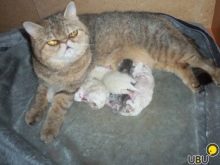


Upbringing
The most common phrase in kittens' advertisements is that they are litter trained. And this is true, because people tend to buy a kitten that already knows how to go to the toilet and does not tear furniture with walls. Therefore, already with the appearance of the initial physical activity, it is worth starting to accustom small exotics to the tray. The place for their tray must be placed next to it, because it will be difficult for small kittens to find a toilet that is in another room.
If one of the kittens got into the habit of shitting in the same place, but not in the tray, then you can rearrange the tray exactly to this place. The method is extremely simple, but effective.
Most likely, the kitten will begin to walk into the litter box and will eventually get used to it. It is necessary to purchase scratching posts and toys for kittens. Already at a young age, they need to sharpen their claws, and gnaw something, as their teeth are teething. Therefore, toys should be bought without pointed parts that could damage the kitten's mouth or get into his stomach. The toy should be simple and reliable. But you can also take the kittens for a check-up to the veterinarian for prophylaxis.
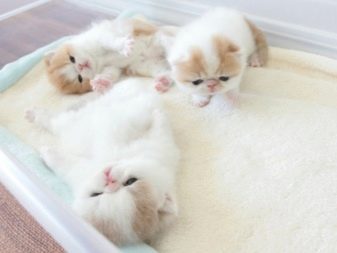
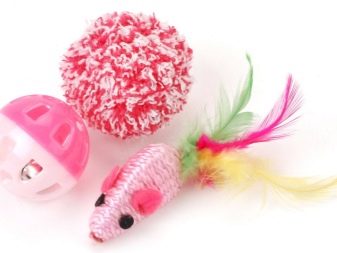
Health
Let's consider what health problems are most typical for exotics.
Let's start with a question that is characteristic not only of exot cats, but also of other breeds. This is castration or sterilization. Not everyone knows how to properly care for a cat after castration, and this is a very important point regarding his future health.
Castration and sterilization is carried out in individuals that are not intended for further breeding. Pet should be given for castration at the age of about 8 months.
At this age, he has already managed to get stronger, but the reproductive and reproductive systems are not yet fully formed. In the first days after the operation, the exotic must be provided with complete rest. Perhaps the first time he will need pain relievers. Dry eyes are common in cats immediately after surgery. The fact is that the operation is performed under anesthesia, but during anesthesia, the eyes do not close, so they dry out. You can gently blot your eyes with a damp cloth to help them heal faster, or use eye drops.
Often, exotics are characterized by a problem with the sinuses. Difficulty breathing or other defects are usually associated with the structural features of their flattened nose.
Above, it was said about the need to brush your teeth and prevent diseases of the oral cavity of exotics. The most common disease affecting their teeth is tartar formation.

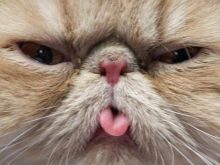

Sometimes there are diseases associated with cardiovascular diseases. In this case, it is necessary to make fundamental changes in the diet of the animal.
For all cats, kidney problems also remain. In principle, this disease is also associated with the characteristics of the diet. By feeding your cat a healthy and varied diet, the problem can be avoided.
In any case, if you suspect that the cat is not feeling well, it is absolutely not worthwhile to engage in home treatment, but first of all you should show the pet to a specialist. The veterinarian will carefully examine the cat, if necessary, take the necessary tests, prescribe medications and give recommendations on the diet and maintenance of the pet.In general, exotic animals have good health and good immunity.
If you correctly follow all the recommendations for caring for them, then the risks of any diseases will be minimized, and the life expectancy of the cat will be very high.


Outcome
So, exotic cats have deservedly conquered the world and the Internet due to their cute appearance and extremely friendly nature. It is the ideal pet that requires little grooming, is picky about food and can be trained quickly. You won't get bored with him, because exotics are very fond of outdoor games with their owners, they treat children well. As a rule, they are very attached and devoted to one person, and they will certainly never forget him. The presence of such a cat adds coziness to every home.

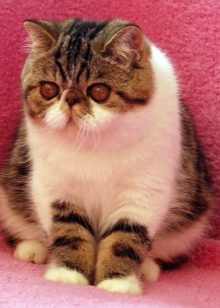
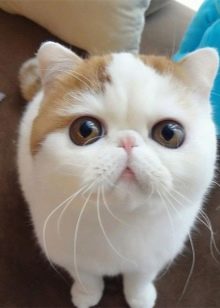
For details on the care and maintenance of exotic plants at home, see below.
































